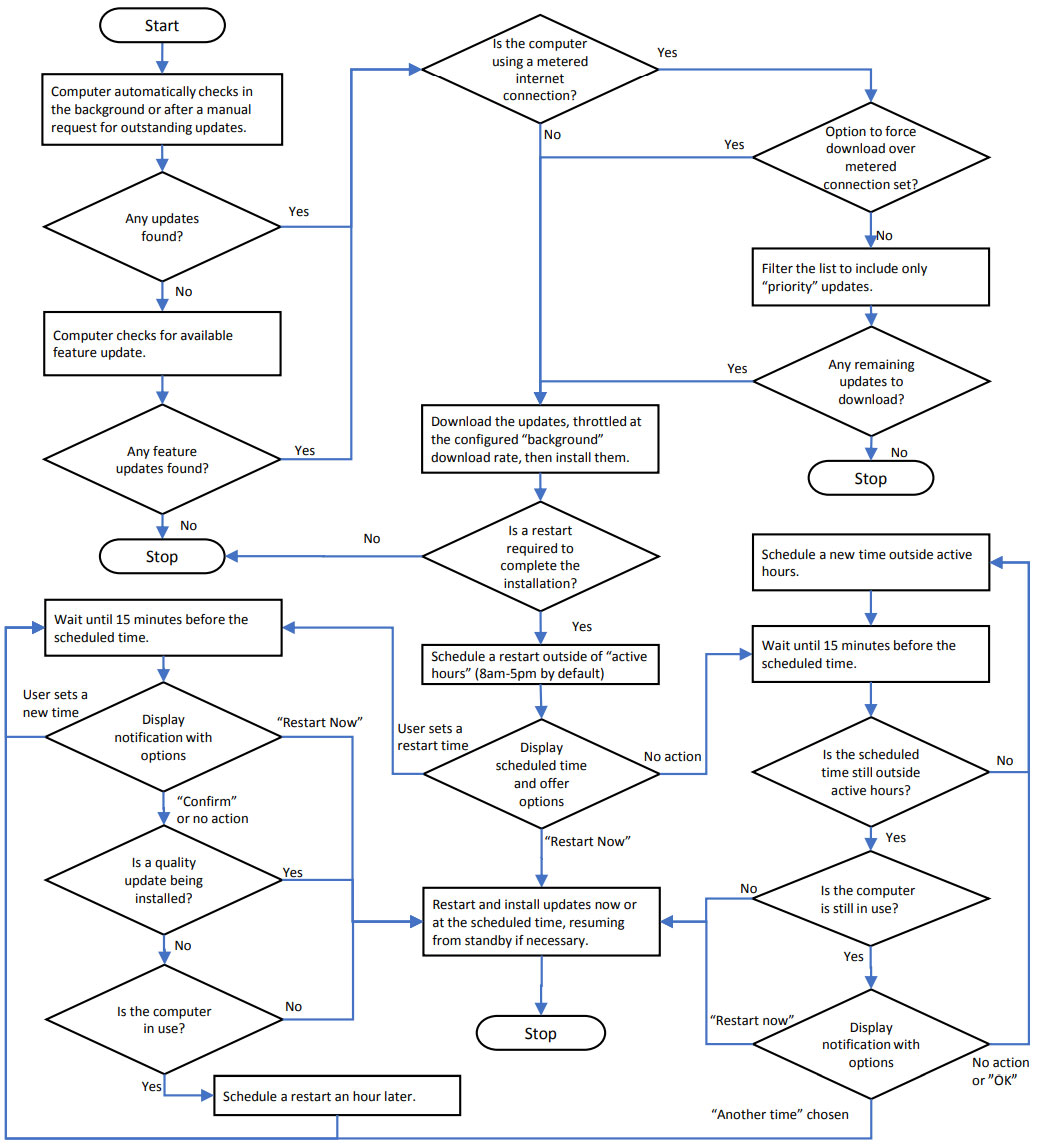Windows 10 study finds automatic updates are effective but confusing
It's all broken down in this handy flowchart.

Microsoft is keen on having Windows 10 update itself with as little interaction from the end user as possible, and in theory, that should make things easy. In practice, however, a recent study suggests that while automatic updates do a good job at keeping Windows 10 PCs secure, the process is more confusing than it needs to be.
"Software producers have aimed to make it easier for users to have up-to-date versions of their software by automating the update process. This process is however not without costs and risks for the user," the study's three authors wrote in paper (PDF).
Part of the problem is that users are unaware of some of the controls available to them. Researchers at the University College London surveyed 93 Windows 10 Home users and found that only 28 percent knew about the "active hours" feature, which allows uses to set a block of time during which Windows will not reboot their PC to install an automatic update while it is being used.
"Half of our participants report unexpected restarts, while half also reported growing concern about the state of their device if an update took a long time. Participants who had previous negative experiences had weaker beliefs about their ability to control updates than those who had not," the authors wrote.
The onus ultimately falls on the user to understand what controls are available to them, though it's fair to say that the update system in Windows 10 is a bit confusing. This is highlighted in an epic flowchart:

The authors constructed the flowchart based on what they observed on a virtual machine containing a snapshot of a fresh Windows 10 Home installation. Whenever Microsoft would release new updates, the authors restored the snapshot to allow the VM to download and install them. This allowed them to try out different scenarios, and though the flowchart is enough to make your head spin, it's "not assumed to be exhaustively complete."
It's important to note that the study isn't disparaging of automatic updates in Windows 10 in general, and in fact states it "can be considered a (perceived) success." However, it also finds there are several areas of improvement, particularly in regards to system restarts, and that the active hours feature is "arguably flawed."
Keep up to date with the most important stories and the best deals, as picked by the PC Gamer team.
"We believe restarts should not occur if the system is in active use (especially so if retrieval of application state is not guaranteed)," the authors stated.
As far as the authors are concerned, the default settings for active hours is unsuitable for 97 percent of users. Part of that is because active hours defaults to 8 am to 5 pm, which is appropriate for many businesses but not necessarily for users at home.
It's an interesting study, and a timely one, considering the various bugs that were present in the October 2018 update for Windows 10. Microsoft has committed to rolling out two major upgrades to Windows 10 each year, plus monthly security patches, so this is obviously an area of importance.
Thanks, PCWorld
Paul has been playing PC games and raking his knuckles on computer hardware since the Commodore 64. He does not have any tattoos, but thinks it would be cool to get one that reads LOAD"*",8,1. In his off time, he rides motorcycles and wrestles alligators (only one of those is true).


